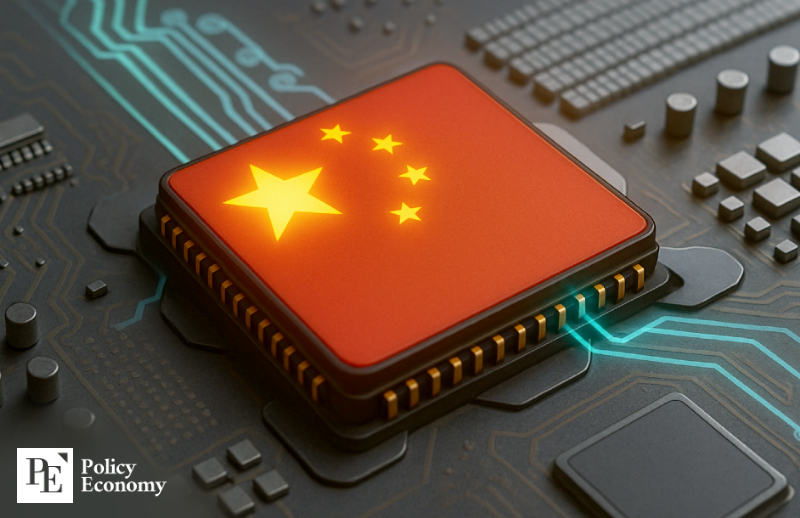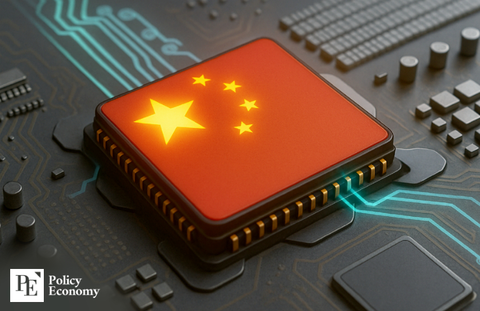Chinese Chipmakers Rush to Domestic IPOs, Speeding Up Self-Reliance With State Backing
Input
Modified
Moore Thread Speeds Through STAR Market Review Despite Losses MetaX and Biren Technology Also Eye Local IPOs Soon Chinese Government’s Backing Fuels Rapid Growth of Key Semiconductor Firms

Moore Threads, often dubbed the “NVIDIA of China,” has completed its domestic IPO process in just 88 days. Against the backdrop of successive U.S. sanctions on China, the urgency of building a self-reliant semiconductor ecosystem has grown, prompting major Chinese chipmakers to rush into local markets to raise capital.
Moore Threads Completes IPO Process
According to Chinese outlets Caixin and Yicai on the 29th (local time), Moore Threads finalized its IPO review process on the 26th, just 88 days after beginning on June 30. The company is set to list soon on the STAR Market, often referred to as China’s Nasdaq, aiming to raise 8 billion yuan (about $1.16 billion). The IPO, underwritten by CSC Financial, will channel proceeds into projects including next-generation AI training and inference chips, advanced graphics chips, and AI system-on-chip (SoC) development.
Though only five years old, Moore Threads has quickly responded to market demand with fast-paced R&D, releasing new products annually since 2021. It launched its first-generation GPU “Sudi” in 2021, followed last year by the fourth-generation “Pinghu,” which supports FP8 precision—a feature crucial for large-scale AI model training. FP8 enables faster processing with lower memory consumption compared to FP32 or FP16, and is also adopted in NVIDIA’s flagship H100. Still, in its prospectus, the company acknowledged a gap with global leaders like NVIDIA in terms of R&D capabilities, core technology accumulation, customers, and ecosystem development.
According to Yicai, Moore Threads’ revenue surged from 46 million yuan in 2022 to 124 million yuan in 2023, and then to 438 million yuan in 2024, representing an average annual growth rate of 208%. In the first half of 2025 alone, sales reached 702 million yuan—exceeding the total of the prior three years combined. However, profitability has lagged behind its rapid top-line growth. Net losses stood at 1.84 billion yuan in 2022, 1.67 billion in 2023, 1.49 billion in 2024, and 271 million yuan in the first half of 2025, suggesting that turning profitable will still take considerable time.
China’s Push for Semiconductor Self-Reliance
Beyond Moore Threads, several other Chinese semiconductor firms are also preparing for public listings. Shanghai-based MetaX, founded in 2020 by former AMD executives, filed for a STAR Market IPO at the end of June, aiming to raise about 3.9 billion yuan (roughly $560 million). Another GPU maker, Biren Technology, is reportedly planning to apply for a Hong Kong IPO in the third quarter of this year.
Analysts view these moves as aligned with Beijing’s broader strategy to localize GPU production in response to U.S. sanctions. Since early 2022, Washington has steadily tightened restrictions to block the flow of semiconductor technology into China. In April this year, the U.S. even banned exports of NVIDIA’s China-specific H20 chips, originally designed to skirt earlier export controls. In turn, the Chinese government and AI chipmakers have been working to reduce reliance on U.S. technology, aiming to establish independent domestic capabilities.
Beijing has also stepped up funding to accelerate this effort. Last year, it launched the third phase of its National Integrated Circuit Industry Investment Fund (known as the “Big Fund”), channeling 344 billion yuan (about $48 billion) into the semiconductor sector. This far surpasses the 138.7 billion yuan invested in the first phase in 2014 and 204.1 billion yuan in the second phase in 2022. Through these initiatives, the government is not only supporting domestic chipmakers but also actively trying to push out NVIDIA, which has long dominated the Chinese market. State-owned enterprises and major private tech players, including ByteDance, are now being encouraged to adopt homegrown chips.

China’s Chip Industry Surges on Government Backing
Beijing’s support has fueled explosive growth across the domestic semiconductor sector. One striking example is Cambricon, often referred to alongside Moore Threads as the “NVIDIA of China.” In the first half of this year, Cambricon posted revenue of 2.88 billion yuan (about $400 million), a 4,348% surge compared with 65 million yuan in the same period last year—its best result since going public in 2020. Net profit also swung from a loss of 530 million yuan last year to a gain of 1.04 billion yuan in the first half of this year.
Founded in 2016, Cambricon develops accelerators (hardware) and software used in AI training and inference. Its products power models from leading Chinese AI players such as DeepSeek, Alibaba, and Tencent, cementing its role as a top local competitor to NVIDIA. Goldman Sachs projects Cambricon’s AI chip shipments will rise from about 143,000 units in 2025 to 2.1 million by 2030.
Other semiconductor firms are also scaling up aggressively. Huawei is expected to launch a dedicated AI accelerator production plant as early as the end of this year, with two additional facilities planned for next year. Meanwhile, SMIC, China’s largest contract chipmaker, plans to double its 7-nanometer production capacity in 2025, bolstering its position in advanced manufacturing.






















Comment